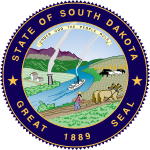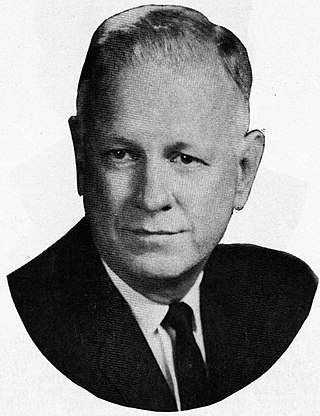
Nils Andreas Boe was an American attorney who served as the 23rd Governor of South Dakota from 1965 to 1969. He served as a judge of the United States Customs Court, later the United States Court of International Trade.
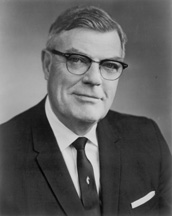
Joseph Henry Bottum was an American politician. He served as the 27th Lieutenant Governor of South Dakota and as a member of the United States Senate from South Dakota.

William Henry McMaster was an American politician who served as the tenth Governor of South Dakota from 1921 until 1925. A member of the Republican Party, he went on to serve as a member of the United States Senate from South Dakota from 1925 to 1931.
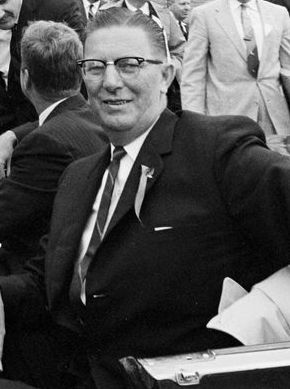
Archibald Maxwell Gubbrud was an American politician who served as the 22nd Governor of South Dakota.

The 1948 United States Senate election in South Dakota took place on November 2, 1948. Incumbent Republican Senator Harlan J. Bushfield, suffering from poor health, declined to run for re-election. On September 27, 1948, he died in office; his wife, Vera C. Bushfield, was appointed to succeed him. Congressman Karl E. Mundt easily won the Republican primary and advanced to the general election, where he was opposed by Democratic nominee John A. Engel, an attorney. Hundt defeated Engel in a landslide.

The 2014 South Dakota gubernatorial election took place on November 4, 2014, to elect the Governor and Lieutenant Governor of South Dakota, concurrently with the election of South Dakota's Class II U.S. Senate seat, as well as other elections to the United States Senate in other states and elections to the United States House of Representatives and various state and local elections.

The 1904 South Dakota gubernatorial election was held on November 8, 1904. Incumbent Republican Governor Charles N. Herreid declined to run for re-election to a third term. Clark County State's Attorney Samuel H. Elrod won the Republican nomination to run as Herreid's successor, and he faced Democratic nominee Louis N. Crill, the former president of the state Senate, and former U.S. Congressman Freeman Knowles, the Socialist nominee. For the first time since 1894, the Democratic and Populist Parties nominated separate candidates. Ultimately, the split in the two parties did not prove dispositive; Elrod defeated Crill and the other candidates in a landslide.

The 1942 United States Senate election in South Dakota took place on November 3, 1942. Incumbent Democratic Senator William J. Bulow ran for re-election to a third term. During the primary, Bulow was attacked for being insufficiently supportive of President Franklin Roosevelt's foreign policy and war preparedness. Former Governor Tom Berry, Bulow's chief opponent, drew a contrast between Bulow's isolationism and his support for Roosevelt's policies. In the end, Berry defeated Bulow in a landslide, and advanced to the general election, where he faced Harlan J. Bushfield, the incumbent Republican Governor of South Dakota. As Republicans gained ground nationwide, Bushfield defeated Berry in a landslide to pick up the seat for the Republican Party. Bushfield did not serve his full term, however; shortly before the 1948 U.S. Senate election, he died.

The 1950 United States Senate election in South Dakota took place on November 7, 1950. Incumbent Republican senator Chan Gurney ran for re-election to a third term. He was challenged in the Republican primary by Congressman Francis H. Case, who had represented the 2nd District since 1939. In the general election, Case faced John A. Engel, an attorney and the 1948 Democratic nominee for the U.S. Senate. As the Republican Party was making significant gains nationwide, Case defeated Engel in a landslide.
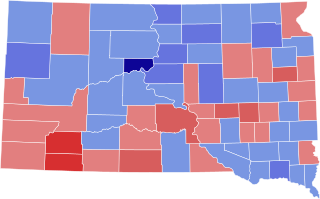
The 1930 United States Senate election in South Dakota took place on November 4, 1930. Incumbent Republican Senator William H. McMaster ran for re-election to a second term. After beating back a challenge in the Republican primary from former State Senator George J. Danforth, McMaster faced Democratic nominee William J. Bulow, the incumbent Governor, in the general election. As the Democratic Party performed well nationwide, Bulow narrowly defeated McMaster.

The 1932 United States Senate election in South Dakota took place on November 7, 1944. Incumbent Republican Senator Chan Gurney ran for re-election to a second term. He faced a strong challenge in the Republican primary from Lieutenant Governor A. C. Miller, who claimed that Gurney was too friendly to New Deal policies, but was defeated by Gurney by a wide margin. In the general election, Gurney faced former State Senator George M. Bradshaw, whom he defeated in a landslide as Thomas E. Dewey was decisively winning the state over President Franklin D. Roosevelt in the presidential election.

The 1954 United States Senate election in South Dakota took place on November 2, 1954. Incumbent Republican Senator Karl E. Mundt ran for re-election to his second term. He was opposed by former State Representative Kenneth Holum, the Democratic nominee. Mundt defeated Holum in a landslide to win re-election.

The 1960 United States Senate election in South Dakota took place on November 8, 1960. Incumbent Republican Senator Karl E. Mundt ran for re-election to his third term. He was challenged by Congressman George McGovern. Both Mundt and McGovern won their respective primaries unopposed and the campaign between the two began. Despite the landslide victory for Vice-President Richard M. Nixon over John F. Kennedy, the race between Mundt and McGovern was quite close. Mundt narrowly won re-election, and McGovern ran for the U.S. Senate again in 1962. He served alongside Mundt for a decade.

The 1968 United States Senate election in South Dakota took place on November 5, 1968. Incumbent Democratic Senator George McGovern ran for re-election to a second term. He was challenged by former Governor Archie M. Gubbrud, who was persuaded to enter the race by the South Dakota Republican establishment. McGovern defeated Gubbrud by a wide margin, even as Richard Nixon was defeating Hubert Humphrey in the state's presidential election in a landslide.
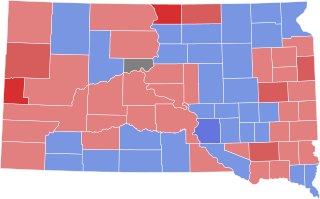
The 1938 United States Senate elections in South Dakota took place on November 8, 1938. Incumbent Republican Senator Peter Norbeck died in office on December 20, 1936. Herbert E. Hitchcock was appointed by Governor Tom Berry as Norbeck's replacement. Two elections for the same Senate seat were held on the same day; one as a special election to fill the remainder of Norbeck's six-year term, and another to select a Senator to serve the next six-year term.

The 1920 South Dakota gubernatorial election was held on November 2, 1920. Incumbent Republican Governor Peter Norbeck declined to run for re-election, instead choosing to run for the U.S. Senate. Lieutenant Governor William H. McMaster won the Republican primary and advanced to the general election, where he faced Nonpartisan League candidate Mark P. Bates and former State Senator William W. Howes, the Democratic nominee. The election was largely a replay of the 1918 election, with McMaster winning a large victory, Bates coming in second, and Howes coming in a distant third.

The 1924 South Dakota gubernatorial election was held on November 4, 1924. Incumbent Republican Governor William H. McMaster declined to run for re-election to a third term, instead opting to run for the U.S. Senate. Lieutenant Governor Carl Gunderson won the Republican primary unopposed. In the general election, he faced three prominent opponents: Democratic nominee William J. Bulow, a former State Senator and Mayor of Beresford; Farmer–Labor nominee A. L. Putnam; and perennial candidate Richard O. Richards. Gunderson. With the left-leaning vote split, Gunderson won the election in a landslide.
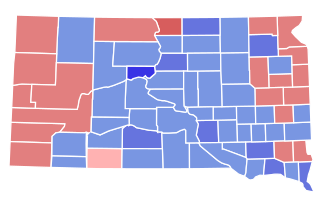
The 1928 South Dakota gubernatorial election was held on November 6, 1928. Incumbent Democratic Governor William J. Bulow ran for re-election to a second term. In the general election, he faced Attorney General Buell F. Jones, the Republican nominee. Despite Republican presidential nominee Herbert Hoover overwhelmingly defeating Democratic nominee Al Smith overwhelmingly in South Dakota, Bulow defeated Jones by a decisive margin to retain the governorship. In so doing, he became the first Democratic candidate for Governor to receive a majority of the vote in the state's history.

The 1930 South Dakota gubernatorial election was held on November 4, 1930. Incumbent Democratic Governor William J. Bulow declined to run for re-election to a third term, instead opting to successfully run for the U.S. Senate. The Republican nomination was hard-fought and the primary was crowded; because no candidate received 35% of the vote, state law required that the nomination be decided at a state party convention. There, former State Senator Warren Green, the last-place finisher in the primary, defeated Secretary of State Gladys Pyle, the plurality winner. In the general election, Green faced D. A. McCullough, the state's Rural Credits Commissioner and the Democratic nominee. Despite Bulow's success in the preceding two elections, Green defeated McCullough by a decisive margin—even as Bulow himself was elected to the U.S. Senate.

The 1942 South Dakota gubernatorial election was held on November 3, 1942. Incumbent Republican Governor Harlan J. Bushfield declined to seek re-election to a third term and instead successfully ran for the U.S. Senate. A crowded Republican primary developed to succeed him, and because no candidate received 35% of the vote, the nomination was decided at the state Republican convention, where former Attorney General Merrell Q. Sharpe, the second-place finisher in the primary, won the nomination. In the general election, Sharpe faced Democratic nominee Lewis W. Bicknell, the 1940 Democratic nominee for governor. Aided by the national Republican landslide, Sharpe defeated Bicknell in a landslide.

